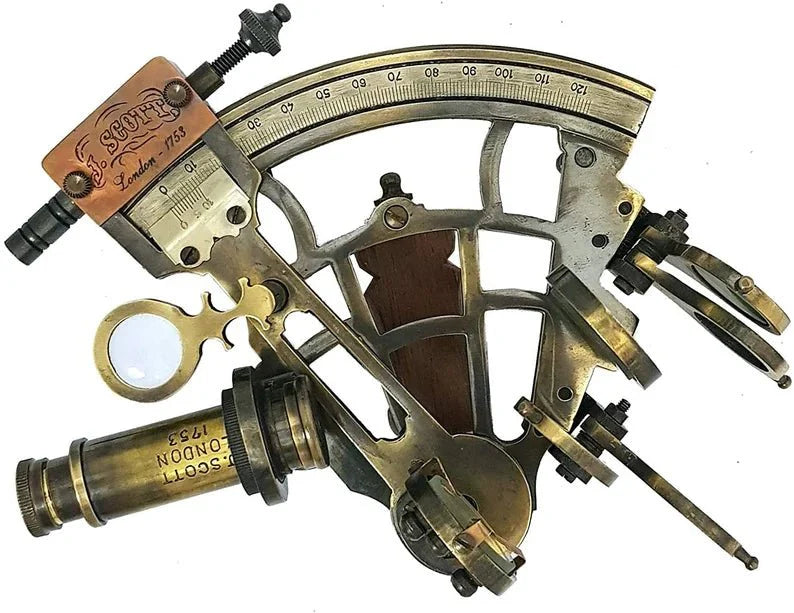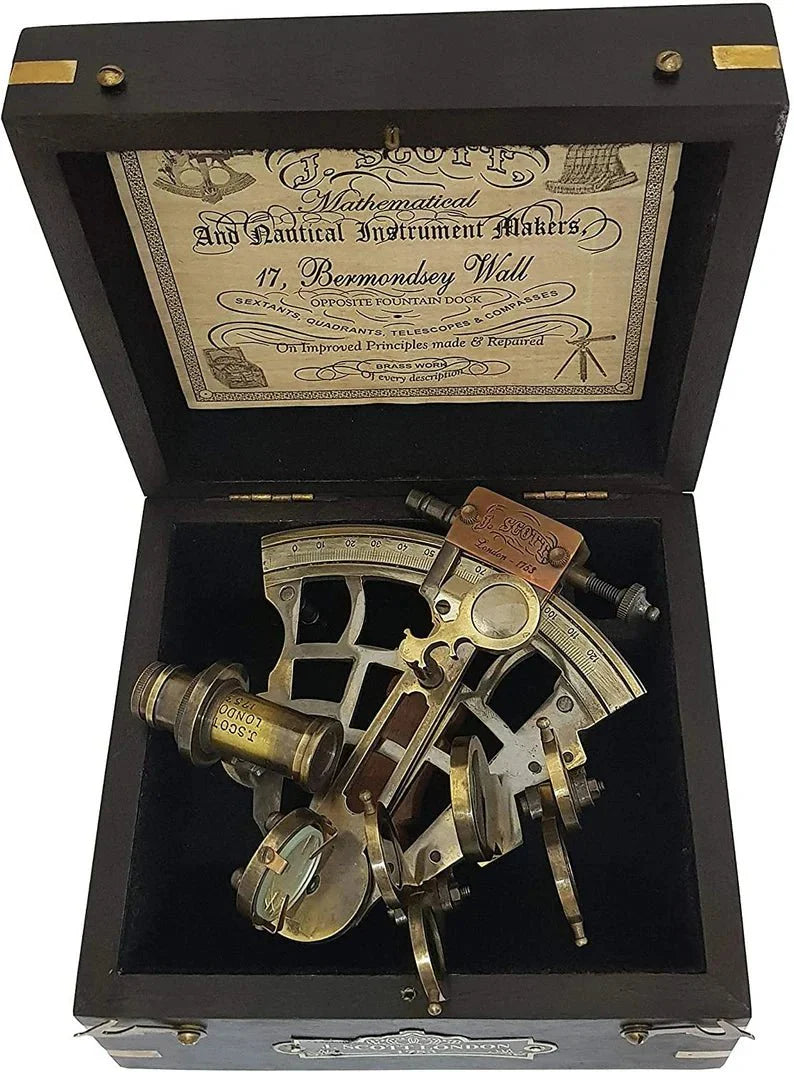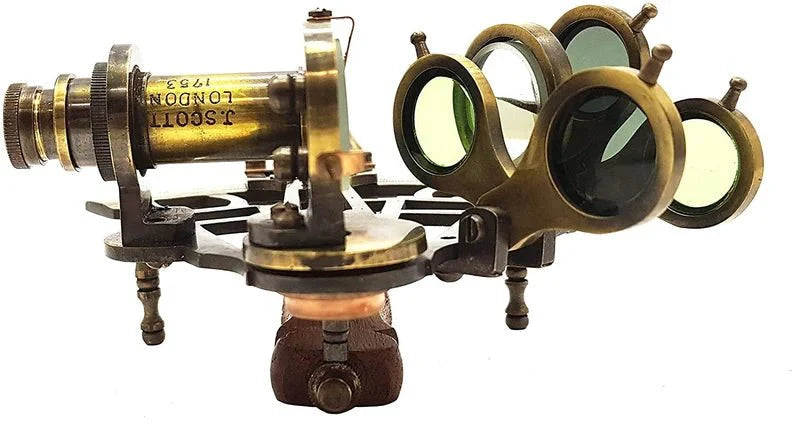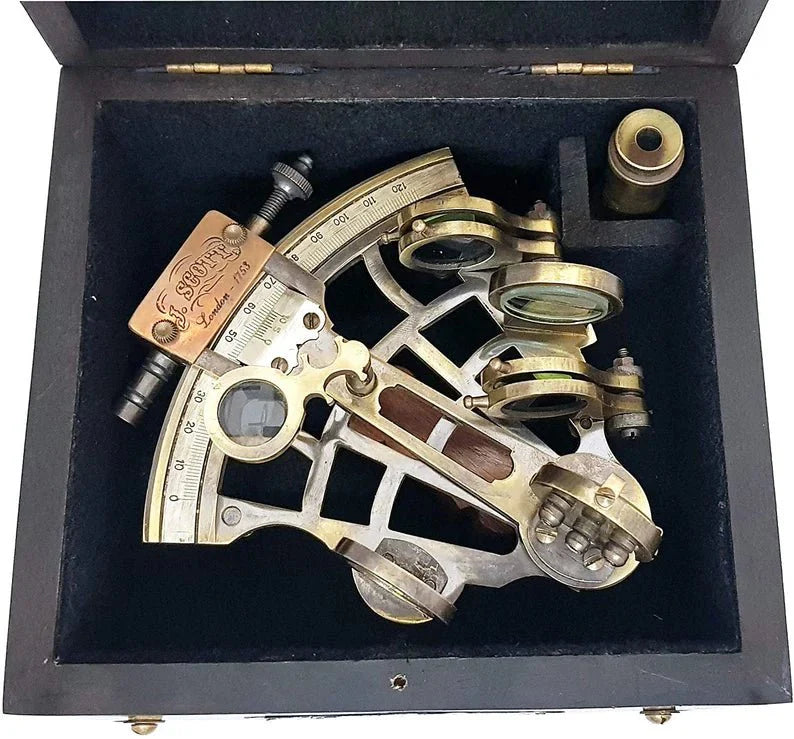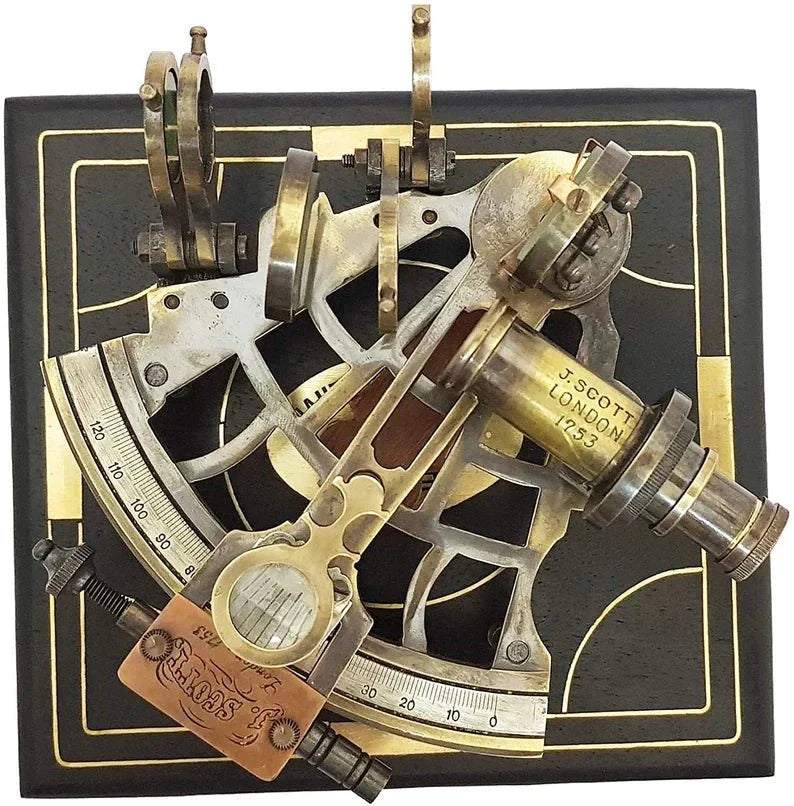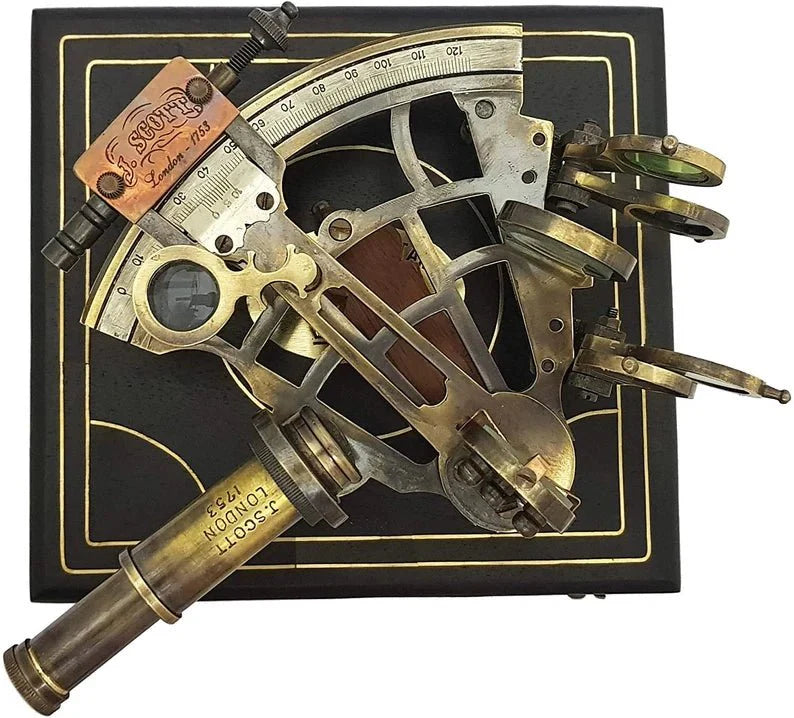1
/
of
7
Nautical Sextant Large Brass Navigation Instrument Sextant
Nautical Sextant Large Brass Navigation Instrument Sextant
Regular price
$79.00
Regular price
$110.00
Sale price
$79.00
Unit price
/
per
Shipping calculated at checkout.
Couldn't load pickup availability
Color Brown Antique
Brand Brass Nautical
Material Wood, Brass
Item Dimensions LxWxH 5.71 x 3.35 x 5.71 inches
Item Weight 0.9 Kilograms
Brass Nautical Brass Ship History Sextant with Hardwood Box
Size:- 12.5cm - L x 11cm - W x 6cm - H (Sextant) Weight - 450 gms.
Size:- 14.5cm - L x 14.5cm - W x 8.2cm - H (Wooden Box) Weight - 550 gms.
Brass Nautical - Brass Ship History Sextant with Hardwood Box - 1864
Brass reproduction Ship Sextant - J SCOTT LONDON -1753- A sextant is an instrument used to measure the angle between any two visible objects. Its primary use is to determine the angle between a celestial object and the horizon which is known as the altitude. Making this measurement is known as sighting the object, shooting the object, or taking a sight. The angle, and the time when it was measured, can be used to calculate a position line on a nautical or aeronautical chart. A common use of the sextant is to sight the sun at noon to find one's latitude. It’s all parts are moving, can be used for basic observation or suitable for collectors and can be a gift for someone.
Brand Brass Nautical
Material Wood, Brass
Item Dimensions LxWxH 5.71 x 3.35 x 5.71 inches
Item Weight 0.9 Kilograms
Brass Nautical Brass Ship History Sextant with Hardwood Box
Size:- 12.5cm - L x 11cm - W x 6cm - H (Sextant) Weight - 450 gms.
Size:- 14.5cm - L x 14.5cm - W x 8.2cm - H (Wooden Box) Weight - 550 gms.
Brass Nautical - Brass Ship History Sextant with Hardwood Box - 1864
Brass reproduction Ship Sextant - J SCOTT LONDON -1753- A sextant is an instrument used to measure the angle between any two visible objects. Its primary use is to determine the angle between a celestial object and the horizon which is known as the altitude. Making this measurement is known as sighting the object, shooting the object, or taking a sight. The angle, and the time when it was measured, can be used to calculate a position line on a nautical or aeronautical chart. A common use of the sextant is to sight the sun at noon to find one's latitude. It’s all parts are moving, can be used for basic observation or suitable for collectors and can be a gift for someone.
Share

